
In genetics, a promoter is a sequence of DNA to which proteins bind to initiate transcription of a single RNA transcript from the DNA downstream of the promoter. The RNA transcript may encode a protein (mRNA), or can have a function in and of itself, such as tRNA or rRNA. Promoters are located near the transcription start sites of genes, upstream on the DNA . Promoters can be about 100–1000 base pairs long, the sequence of which is highly dependent on the gene and product of transcription, type or class of RNA polymerase recruited to the site, and species of organism.

A non-coding RNA (ncRNA) is a functional RNA molecule that is not translated into a protein. The DNA sequence from which a functional non-coding RNA is transcribed is often called an RNA gene. Abundant and functionally important types of non-coding RNAs include transfer RNAs (tRNAs) and ribosomal RNAs (rRNAs), as well as small RNAs such as microRNAs, siRNAs, piRNAs, snoRNAs, snRNAs, exRNAs, scaRNAs and the long ncRNAs such as Xist and HOTAIR.

Antisense RNA (asRNA), also referred to as antisense transcript, natural antisense transcript (NAT) or antisense oligonucleotide, is a single stranded RNA that is complementary to a protein coding messenger RNA (mRNA) with which it hybridizes, and thereby blocks its translation into protein. The asRNAs have been found in both prokaryotes and eukaryotes, and can be classified into short and long non-coding RNAs (ncRNAs). The primary function of asRNA is regulating gene expression. asRNAs may also be produced synthetically and have found wide spread use as research tools for gene knockdown. They may also have therapeutic applications.
Hox genes, a subset of homeobox genes, are a group of related genes that specify regions of the body plan of an embryo along the head-tail axis of animals. Hox proteins encode and specify the characteristics of 'position', ensuring that the correct structures form in the correct places of the body. For example, Hox genes in insects specify which appendages form on a segment, and Hox genes in vertebrates specify the types and shape of vertebrae that will form. In segmented animals, Hox proteins thus confer segmental or positional identity, but do not form the actual segments themselves.
Polycomb-group proteins are a family of protein complexes first discovered in fruit flies that can remodel chromatin such that epigenetic silencing of genes takes place. Polycomb-group proteins are well known for silencing Hox genes through modulation of chromatin structure during embryonic development in fruit flies. They derive their name from the fact that the first sign of a decrease in PcG function is often a homeotic transformation of posterior legs towards anterior legs, which have a characteristic comb-like set of bristles.
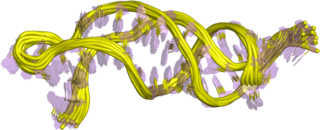
Telomerase RNA component, also known as TR, TER or TERC, is an ncRNA found in eukaryotes that is a component of telomerase, the enzyme used to extend telomeres. TERC serves as a template for telomere replication by telomerase. Telomerase RNAs differ greatly in sequence and structure between vertebrates, ciliates and yeasts, but they share a 5' pseudoknot structure close to the template sequence. The vertebrate telomerase RNAs have a 3' H/ACA snoRNA-like domain.

Homeobox protein Hox-C6 is a protein that in humans is encoded by the HOXC6 gene. Hox-C6 expression is highest in the fallopian tube and ovary. HoxC6 has been highly expressed in many types of cancers including prostate, breast, and esophageal squamous cell cancer.

Homeobox protein Hox-D11 is a protein that in humans is encoded by the HOXD11 gene.
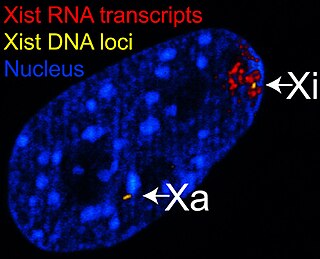
Xist is a non-coding RNA transcribed from the X chromosome of the placental mammals that acts as a major effector of the X-inactivation process. It is a component of the Xic – X-chromosome inactivation centre – along with two other RNA genes and two protein genes.

Long non-coding RNAs are a type of RNA, generally defined as transcripts more than 200 nucleotides that are not translated into protein. This arbitrary limit distinguishes long ncRNAs from small non-coding RNAs, such as microRNAs (miRNAs), small interfering RNAs (siRNAs), Piwi-interacting RNAs (piRNAs), small nucleolar RNAs (snoRNAs), and other short RNAs. Given that some lncRNAs have been reported to have the potential to encode small proteins or micro-peptides, the latest definition of lncRNA is a class of RNA molecules of over 200 nucleotides that have no or limited coding capacity. Long intervening/intergenic noncoding RNAs (lincRNAs) are sequences of lncRNA which do not overlap protein-coding genes.
TOX high mobility group box family member 3, also known as TOX3, is a human gene.
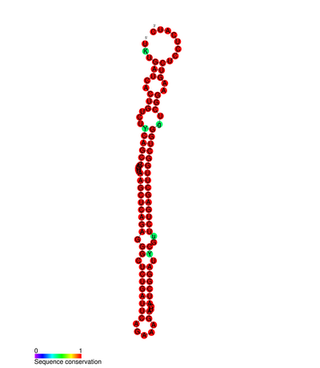
mir-127 microRNA is a short non-coding RNA molecule with interesting overlapping gene structure. miR-127 functions to regulate the expression levels of genes involved in lung development, placental formation and apoptosis. Aberrant expression of miR-127 has been linked to different cancers.
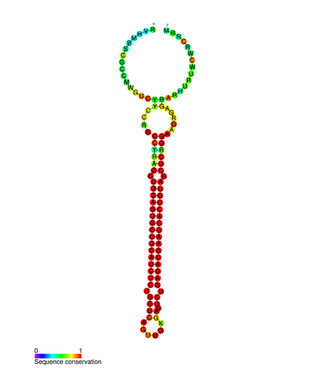
In molecular biology mir-143 microRNA is a short RNA molecule. MicroRNAs function to regulate the expression levels of other genes by several mechanisms. mir–143 is highly conserved in vertebrates. mir-143 is thought be involved in cardiac morphogenesis but has also been implicated in cancer.

MALAT 1 also known as NEAT2 is a large, infrequently spliced non-coding RNA, which is highly conserved amongst mammals and highly expressed in the nucleus. MALAT1 was identified in multiple types of physiological processes, such as alternative splicing, nuclear organization, epigenetic modulating of gene expression, and a number of evidences indicate that MALAT1 also closely relate to various pathological processes, ranging from diabetes complications to cancers. It regulates the expression of metastasis-associated genes. It also positively regulates cell motility via the transcriptional and/or post-transcriptional regulation of motility-related genes. MALAT1 may play a role in temperature-dependent sex determination in the Red-eared slider turtle.
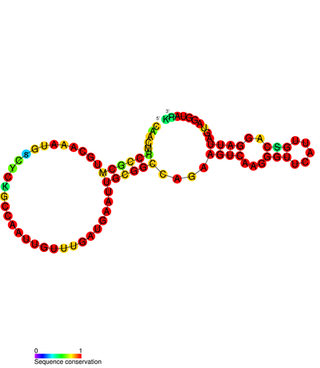
Bithoraxoid (bxd) is a long non-coding RNA found in Drosophila. It silences the expression of the Ultrabithorax (Ubx) gene by transcriptional interference.

Prostate-specific transcript 1 , also known as PCGEM1, is a long non-coding RNA gene. In humans, it is located on chromosome 2q32. It is over-expressed in prostate cancer. In a study of prostate tumours from 88 men, levels of PCGEM1 were found to be higher in prostate cancer cells in African-American men than in Caucasian-American men. The mortality rate of prostate cancer is highest in African-American men.
In molecular biology, HOTTIP is a long non-coding RNA. The gene encoding HOTTIP is located at the 5′ tip of the HOXA locus, and coordinates the activation of several of the 5′ HOXA genes. The non-coding RNA is brought into close proximity with the HOXA genes by chromosomal looping. HOTTIP binds to the WDR5 protein, which forms a complex with the histone methyltransferase protein MLL. This targets the WDR5-MLL complex to the HOXA region and results in H3K4 methylation and transcriptional activation of the HOXA locus. More recently, HOTTIP has been shown to play a role in Hepatocellular Carcinoma (HCC) progression. HOTTIP expression levels predict metastasis formation and poor disease outcome in HCC patients. HOTTIP has been shown to be transcriptionally regulated by a transcriptional coactivator PSIP1/p52

HOXA11-AS lncRNA is a long non-coding RNA from the antisense strand in the homeobox A. The HOX gene contains four clusters. The sense strand of the HOXA gene codes for proteins. Alternative names for HOXA11-AS lncRNA are: HOXA-AS5, HOXA11S, HOXA11-AS1, HOXA11AS, or NCRNA00076. This gene is 3,885 nucleotides long and resides at chromosome 7 (7p15.2) and is transcribed from an independent gene promoter. Being a lncRNA, it is longer than 200 nucleotides in length, in contrast to regular non-coding RNAs.
Epigenetics of human development is the study of how epigenetics effects human development.
Colon cancer associated transcript 1 is a long non-coding RNA that, in humans, is encoded by the CCAT1 gene.



















